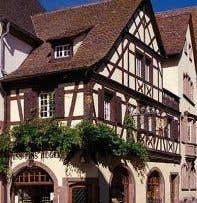While American wine writer Dan Berger and the US-based International Riesling Foundation try to draw up a Riesling Taste Scale to give some guide to sweetness on labels, as reported here, the Alsace wine community has been working to combat increasingly vociferous protests from wine commentators and consumers at the high residual sugar to be found in so many Alsace Rieslings nowadays. This is their official statement :
- To apply the INAO rule that a “dry”wine must not exceed 4 grams of residual sugar per litre (g/l). It should be remembered that this rule is applied in all other French wine regions except Alsace.
- To apply the European rule which defines the maximum sugar level for a wine to be labelled “dry”, “semi-dry”, “ semi-sweet” or “ sweet”.
- To define the desired type of Riesling according to the levels of ripeness (with a limit imposed on chaptalised wines) and acidity.
- 6 g/l for a wine that has been enriched (chaptalised), no matter what its acidity level.
- 9 g/l for a non-enriched wine with a total acidity equal or lower than 6 g/l (tartaric).
- 12 g/l for a non-enriched wine with a total acidity exceeding 6 g/l.
Hmm. So common or garden Alsace Riesling with sugar added at fermentation can still be 50% sweeter than any other regular French dry white wine. And surely the fact that wines with village or vineyard designations, along with Vendanges Tardives and SGN wines, are exempt continues to foster the suggestion that the best wines of the region are sweeter than dry?
I also think this superfluous sweetness problem applies just as much and arguably even more to Pinot Gris and Gewurztraminer myself.
Obeying instructions from purple pager Mark Prust, I shall be tasting in Alsace later this month and will follow all this up.
Julia: I have to say that they seem to have picked the worst of the three options. Rather than restrict the sweetness levels that can qualify as AOC Alsace Riesling, much better to try give an indication on the label as to approximately how sweet the wine will taste – along the lines of Zind Humbrecht's sweetness index. The German regulations on what constitutes trocken or 'dry' are even more complex, as outlined in my article on German wine classification and the VDP – see especially the section near the end on definitions.

